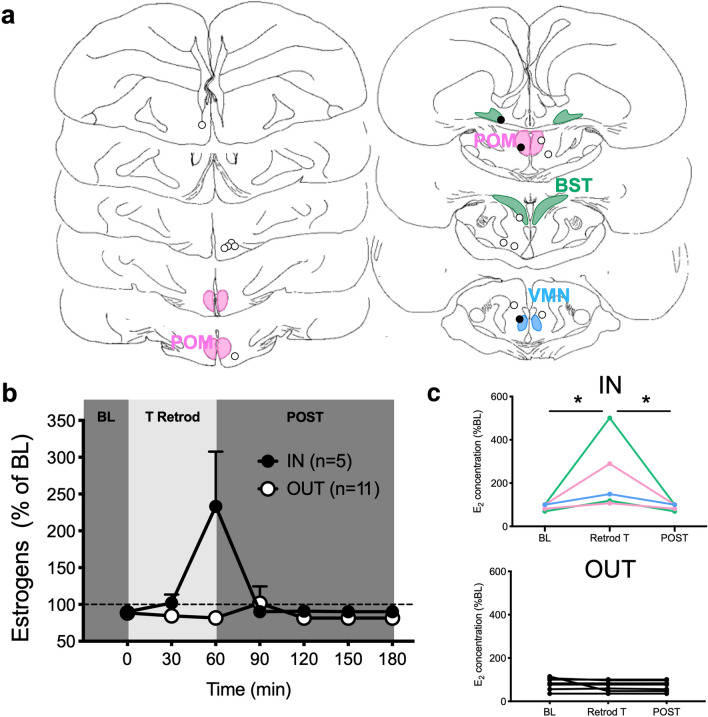Figure 2.
Effect of testosterone retrodialysis on the changes in estrogen concentrations in the dialysate expressed as a percentage of the baseline. (a) Schematic representation of coronal sections of the quail brain showing the location of the dialysis probes: IN probes are either within or touching the colored zones representing brain regions expressing aromatase. See legend of Fig. 1 for the definition of different brain areas. Black and open circles respectively represent birds in which estrogen concentrations did or did not increase above 150% of the BL during the retrodialysis of T. (b) Mean changes in time of estrogen concentration relative to the mean concentration measured in the 3 samples composing the baseline period. BL: baseline (last point of a 90 min baseline period), T Retrod: Testosterone retrodialysis, POST: Period after the end of testosterone retrodialysis. Only males with a probe in a brain region expressing aromatase exhibited a significant rise in estrogens peaking at the end of the retrodialysis period and then immediately returning to BL (Friedman ANOVAs: IN, χ2n=5 = 21.82, p = 0.0013; OUT, χ2n=11 = 6.667, p = 0.3528; no post hoc comparison reached significance). (c) Individual percent changes in E2 concentration relative to BL at the end of the three sampling periods for IN and OUT birds (for IN birds the line color refers to the color of areas in panel A; Friedman ANOVAs: IN, χ2n=5 = 10.00, p = 0.0123; OUT: χ2n=11 = 2.00, p = 0.7778; post hoc *p < 0.05). The baseline amounts of estrogens per sample in this experiment ranged between 0.041 and 0.395 pg per sample (10 µl; Mean ± S.E.M. = 0.099 ± 0.018, n = 16). Panel A is composed of home made drawings onto which probe positions were reported using Graphic for Mac (https://graphic.com/mac/), other panels were created with Graph Pad Prism 8 (https://www.graphpad.com/scientific-software/prism/). All panels were assembled in Graphic.

